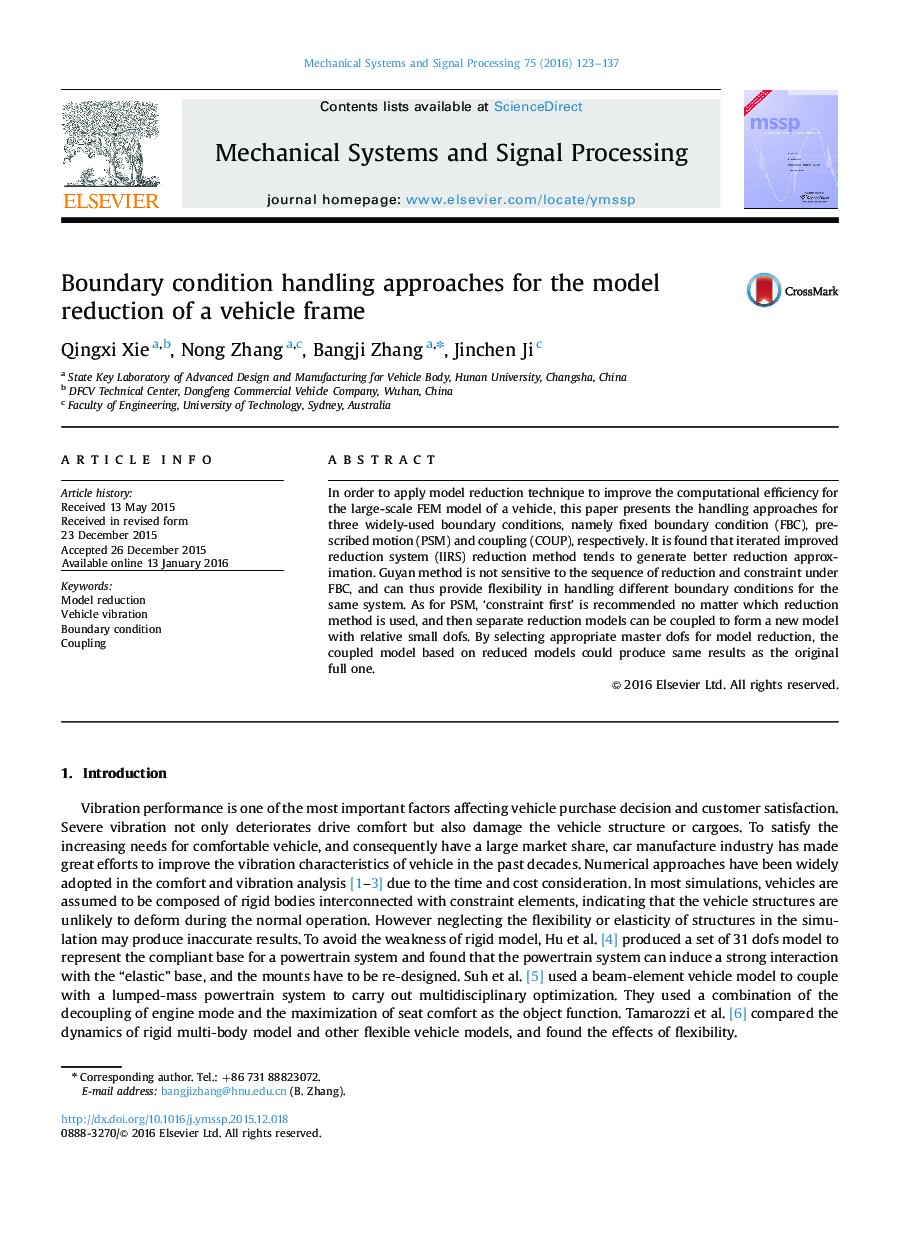| Article ID | Journal | Published Year | Pages | File Type |
|---|---|---|---|---|
| 6955134 | Mechanical Systems and Signal Processing | 2016 | 15 Pages |
Abstract
In order to apply model reduction technique to improve the computational efficiency for the large-scale FEM model of a vehicle, this paper presents the handling approaches for three widely-used boundary conditions, namely fixed boundary condition (FBC), prescribed motion (PSM) and coupling (COUP), respectively. It is found that iterated improved reduction system (IIRS) reduction method tends to generate better reduction approximation. Guyan method is not sensitive to the sequence of reduction and constraint under FBC, and can thus provide flexibility in handling different boundary conditions for the same system. As for PSM, 'constraint first' is recommended no matter which reduction method is used, and then separate reduction models can be coupled to form a new model with relative small dofs. By selecting appropriate master dofs for model reduction, the coupled model based on reduced models could produce same results as the original full one.
Related Topics
Physical Sciences and Engineering
Computer Science
Signal Processing
Authors
Qingxi Xie, Nong Zhang, Bangji Zhang, Jinchen Ji,
